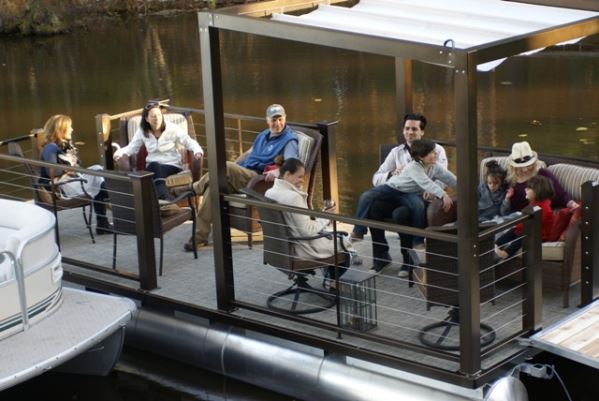 When you get two boating brothers together, yes, they can come up with something more than just trouble. Lifelong boaters Chauncey and Darrell Marrier grew up in Withee, Wis. That’s about 45 minutes due west of Wausau in north central Wisconsin. Boating has been part of their lives and their parents’ lives. When boaters see another way to enjoy the water even more or overcome an obstacle to their boating enjoyment, they come up with solutions (get the pun?... water, solutions. Okay, well maybe not…). Chauncey and Darrell did just that.
When you get two boating brothers together, yes, they can come up with something more than just trouble. Lifelong boaters Chauncey and Darrell Marrier grew up in Withee, Wis. That’s about 45 minutes due west of Wausau in north central Wisconsin. Boating has been part of their lives and their parents’ lives. When boaters see another way to enjoy the water even more or overcome an obstacle to their boating enjoyment, they come up with solutions (get the pun?... water, solutions. Okay, well maybe not…). Chauncey and Darrell did just that.
Dock Real Estate
Their idea to better connect was to expand on what they call “dock real estate.” But they wanted to do that without just adding more sections of a dock. They saw the need for space at the end of a dock where folks could have a larger social or gathering area without being crowded on a 4-foot wide platform over the water. They decided to blend that idea with a basic pontoon boat design. The extra “real estate” had to be open, versatile, stable and easy to keep at the end or side of the dock. It took a while to come up with the right name, but within those parameters the “Lake Lounger” was born.
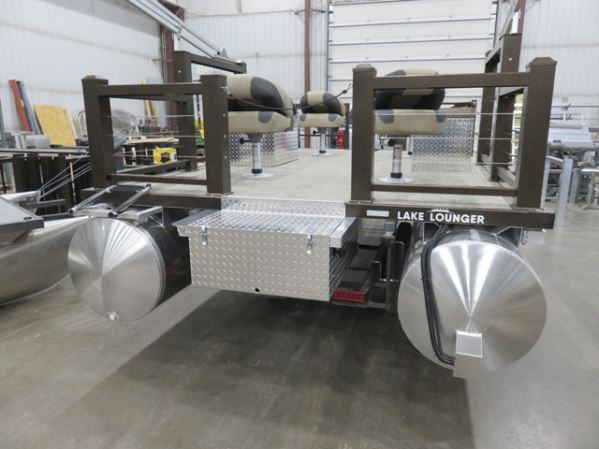 The first Lake Lounger was what some would simply see as a 22-foot pontoon boat that didn’t have a transom for an engine; or furniture, or a traditional looking fence where the deck stops, or fixed seating. The brothers designed in features that one would see less on a pontoon boat and more on the patio or deck of your home. The on-deck post and rail system is unique to pontoon boats and much more like what one would see in the pages of magazines featuring up-scale homes.
The first Lake Lounger was what some would simply see as a 22-foot pontoon boat that didn’t have a transom for an engine; or furniture, or a traditional looking fence where the deck stops, or fixed seating. The brothers designed in features that one would see less on a pontoon boat and more on the patio or deck of your home. The on-deck post and rail system is unique to pontoon boats and much more like what one would see in the pages of magazines featuring up-scale homes.
The look is a blend of contemporary and traditional with its thick, hammered, powdercoat paint finish. The hammered finish gives the current two colors selection of Sunset Bronze or Cirrus Gray, a tactile and visually deep, textured, two-tone effect providing an extremely durable coating on the strong posts and rails.
The strength of the system lies in its design and material. It is discretely anchored to and through the deck to the cross-members. The rail has integral cupholders large enough for even the larger of today’s insulated tumblers.
Between the upper and lower rail are a series of stainless steel cables, tensioned between the vertical posts. The look screams “nautical” yet delivers the unparalleled, unobstructed view of the waters surrounding the Lake Lounger. Again, that too was one of the brothers’ goals; to provide a relaxing, open social area so all could enjoy the surrounding environment.
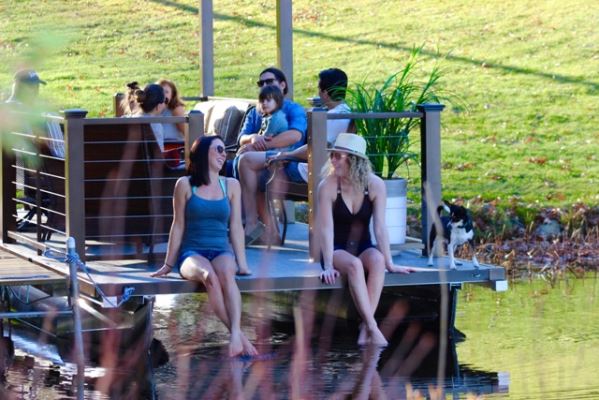 Solid Foundation
Solid Foundation
Stability at the water level is delivered with the use of 25-inch diameter pontoon logs, which all the boat models have. The first group of logs were purchased from a pontoon boat company and were just rounded at each end, like at the stern of each log. Well, that made moving the Lake Lounger difficult so the more conventional cones at the bow were integrated into the design for better maneuvering at launch than for use to cruise. The use of the Lake Lounger as a “boat” was a distant thought. Anchoring the Lake Lounger at dockside was the idea, but it too evolved based on practicality and customer input.
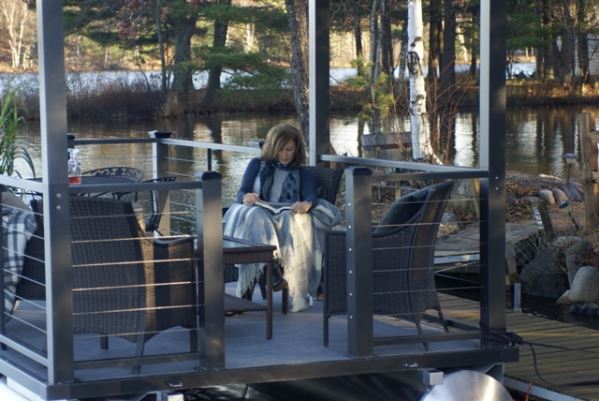 In-House Control
In-House Control
After the first few Lake Loungers sold, the manufacturing of the logs was brought in-house. The tooling to make all the logs, deck and rail components was designed and made, in-house. Even the intricate cones at the bow are made in-house on custom tooling designed by the Lake Lounger team and built locally. The deck is laid on aluminum channels turned to deliver the greatest beam-strength to support the passengers and accoutrements. Important to the development of the Lake Lounger and the business was the availability of local manufacturing talent. Some of the early welding was done by a nearby, very skilled farmer. Several of the employees are schoolmates of Chauncey or Darrell. Having grown up in the area, bringing such a manufacturing opportunity to the community is also important to the family.
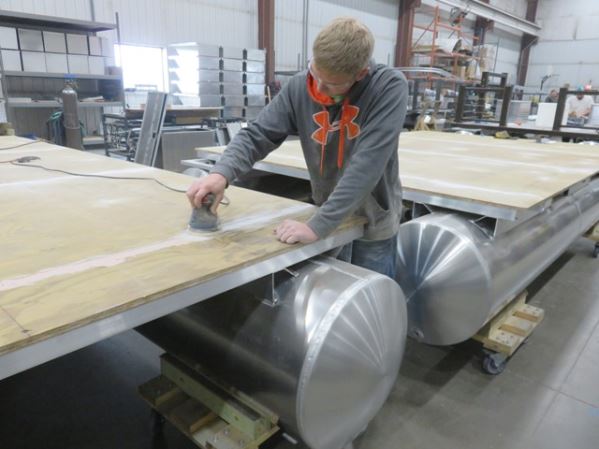 Craftsmanship Is Key
Craftsmanship Is Key
Quality of manufacturing is carried down to some of the most detailed but unnoticed steps in the process. Once the marine-grade plywood deck is attached to the cross members and the cross members attached to the logs, the joints and imperfections of each board are sanded level and filled to make the joints seamless and any divots in the plywood disappear. Seaming the joints is akin to what a craftsman does when installing the slate of a billiard table.
On the billiard table the installer uses beeswax to fill the joint. On the boat, a special compound is used so the owner will see only a single, uniform deck sole. The deck is covered in a low/no-maintenance, Infinity brand, woven poly, like many other pontoon boats in the industry. The color of the covering, as well as the color of the seating trim is tailored to match the primary color of the boat.
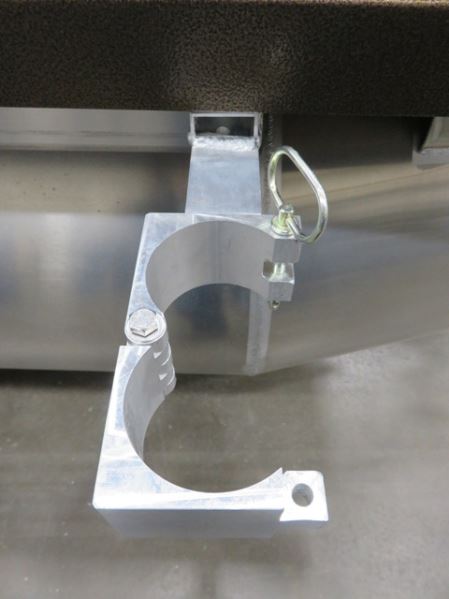
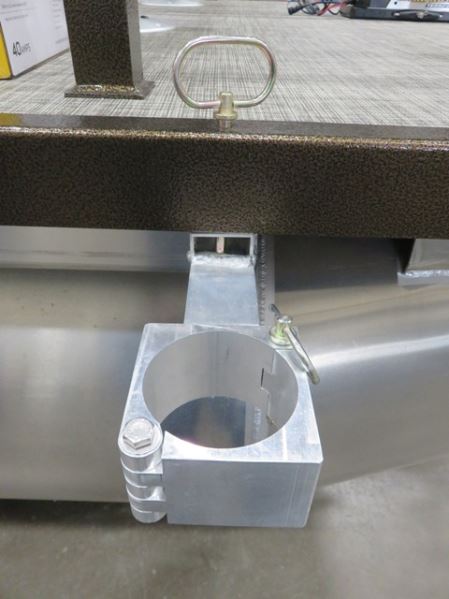 Adding Jaw Clamps
Adding Jaw Clamps
To make sure the Lake Lounger would create the expanded “dock real estate” and be secure to the dockside, they created a clamp-like device to grab onto an existing pier pole or an auxiliary pole at the side of the pier. It is a milled aluminum, articulating clamp.
One end is bolted to the Lake Lounger with the other end having the 4-inch diameter jaw to surround the pier pole. To accommodate wave action or boarding, one could use a simple PVC pipe fitted inside the jaw to make vertical travel on the pier pipe more efficient and smoother. There are two of the jaws mounted on the starboard side of each Lake Lounger. Yes, they can be switched to the port side if desired. They open and close with large, easy to use pins so you can take your Lake Lounger around your lake and to your friend’s docks.
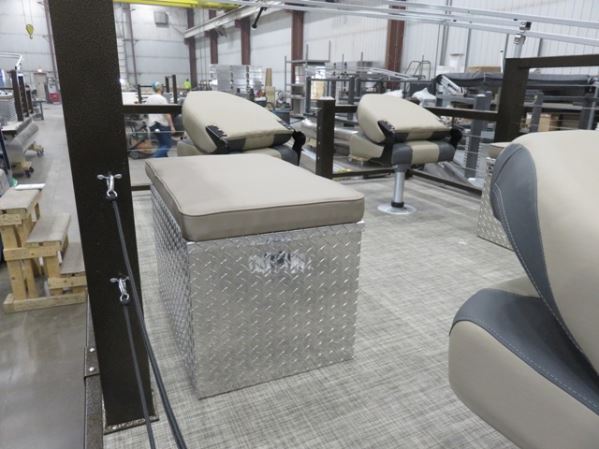 Custom Seating
Custom Seating
Depending on the cruising or fishing model of Lake Lounger selected, the seating could be two simple bench style or a selection of pedestal style. The bench seats are also made in-house from diamond-plate aluminum. The bench seats hide storage or a live well/ice chest. The bench seat lid is a vinyl covered pad in the same color scheme as the pedestal seating or to accent the primary boat color.
Next came the power to move the Lake Lounger not only from the launching to docking area but to get quietly around the lake. Again, a simple answer came in the form of an electric trolling motor. Lake Lounger pre-rigs their boats with a selection of Minn Kota trolling motors, the most popular being the 70 and 80 series with the IPilot feature. They do offer the 55 series from Minn Kota but highly recommend the stronger, more fully featured units.
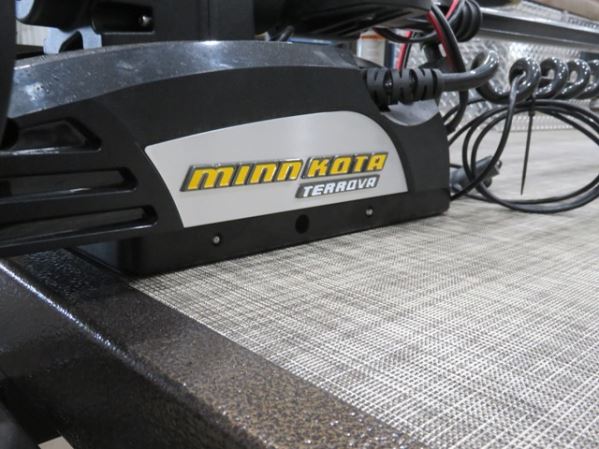 The IPilot allows the operator to cruise along a pre-programmed, pre-learned route or hold in place with GPS accuracy. The trolling motor is mounted at the bow or at the battery pod.
The IPilot allows the operator to cruise along a pre-programmed, pre-learned route or hold in place with GPS accuracy. The trolling motor is mounted at the bow or at the battery pod.
To power the trolling motor, livewell or other 12-volt accessories, there is a battery bank inside a diamond-plate transom at the stern, where you would normally find an engine transom bracket or engine pod of a pontoon boat. The Minn Kota battery charger is also in the pod.
A 120-volt, waterproof, Marinco receptacle is on the starboard side of the battery pod for easy access and charging. The electric power feature is a welcome bonus to lake property owners where gas engines are not allowed. Other than keeping the batteries charged and putting them inside for the winter, there is no real engine maintenance either.
Yet some customers have asked that the battery pod also accommodate a gasoline- powered outboard. The owner can have the best of both worlds: quiet, efficient electric power from their Minn Kota or the endurance and speed of the tiller handle controlled, gas outboard of their preferred brand.
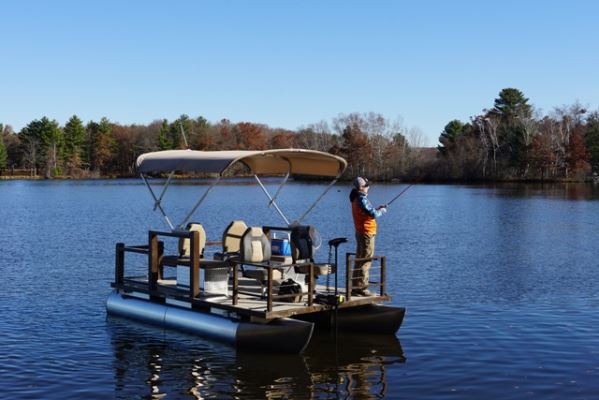 Angler Approved
Angler Approved
While the Lake Lounger was developed to extend the use of the pier or go for a nature-enjoying cruise, anglers also soon came to appreciate the open floorplan and stability of the design. The brothers adjusted the seating, posts and rail to address that arena of interest. The ease of altering the design for more of an open bow or stern made the Lake Lounger a great platform for anglers. Each of the lengths of the Lake Loungers can be built for cruising or fishing. For the swimming crowd, there is a telescoping boarding ladder on the end of the log at the port quarter.
When sitting at the pier, cruising or fishing, the sun provides welcome warming, yet we all know it can be a bit much at times and we want to protect ourselves from too much UV exposure. One of those 12-volt accessories on the Lake Lounger is their PWR-ARM powered Bimini top.
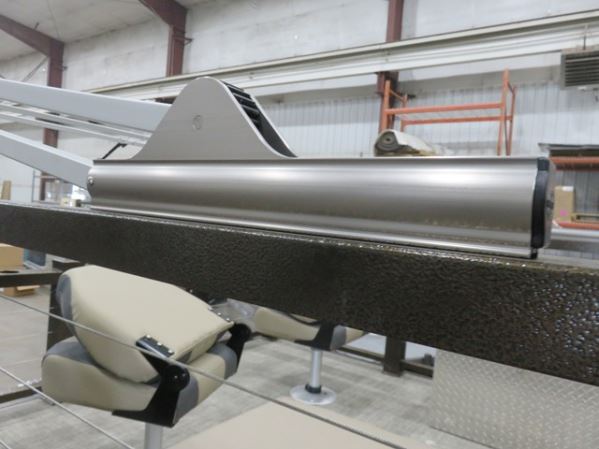 Why put a powered Bimini top on a simple, basic boat? When asked, the answer comes quickly… “It’s neat!” Yes, the one-touch top system is “neat” and like many other features of the Lake Lounger, simply elegant. The Bimini control button is located at one of the rails for easy access from the dock or the boat. And yes, it really is a “neat” touch. In keeping with the patio design concept, one of the early top/shade ideas that is still an option is a partial pergola to cover the aft most two-thirds of the Lake Lounger.
Why put a powered Bimini top on a simple, basic boat? When asked, the answer comes quickly… “It’s neat!” Yes, the one-touch top system is “neat” and like many other features of the Lake Lounger, simply elegant. The Bimini control button is located at one of the rails for easy access from the dock or the boat. And yes, it really is a “neat” touch. In keeping with the patio design concept, one of the early top/shade ideas that is still an option is a partial pergola to cover the aft most two-thirds of the Lake Lounger.
The Lineup
The Lake Lounger comes in 13-, 18- and 22-foot lengths, laid out in either a cruising or fishing floorplan. All models have a standard 8-foot, 6-inch beam so it will fit many pontoon trailers and be road transport legal. The floorplans also vary within the fishing or cruising design to match the needs and uses of the Lake Lounger owner.
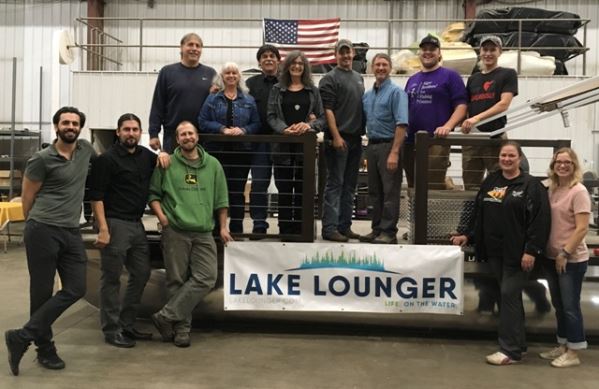
For More Information on Lake Lounger call 715-644-2229 or visit www.lakelounger.com.

